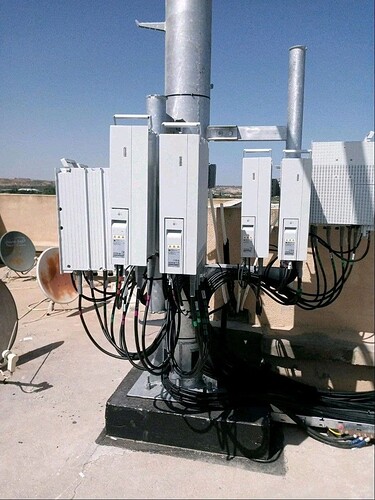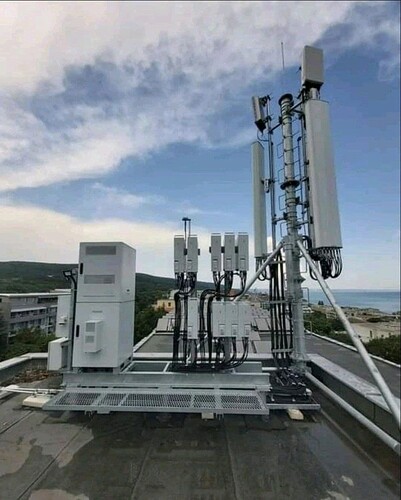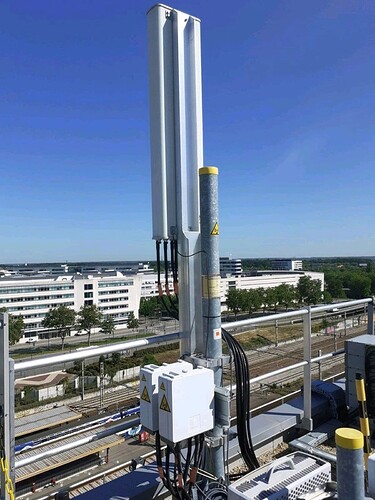The logical term “distributed and integrated” is because traditionally the radio architecture for cellular system is based on a single-standalone system (Base Stations) usually installed indoor but now, the cellular architecture is divided.
So now the BTS (Base Transceiver Station) is the integration of various radio unit like BBU and RRU. Despite installing only in indoor , radio units are now installed in the tower below the Antenna.
The RRU is connected to the base station via the fiber optic link which is bi-directional link. The optical interface link is also known as CPRI(Common Public Radio Interface). CPRI is a interface protocol developed by combination of major telecom equipment’s manufacturing company.
The RRU helps to reduce the coaxial feed line losses, increase system efficiency and provide high level of flexibility in cellular site construction. Undoubtedly, this helps in upgrading to new equipment’s and devices more easily.
RRU Functions
-
Acts as a transceiver: transmit and receive the user signals to the base station and vice-versa.
-
Provides back to back support and connectivity between user equipment’s like power, delay,etc.
-
Control and process the EM signals received from the Antenna via Jumper (Hollow Guide).
-
Provide interface between two physical link: Optical and EM (Electromagnetic).
-
Provide Controlling support of the Auxiliary equipment’s like RCU (Remote Control Unit) for electrical tilt adjustment generally known as RET (Remote Electrical Tilt).
-
Generate and sends the different signals like VSWR, RET, ACT,etc.
RRU Hardware Description
-
CPRI Port: There is 2 port generally named as CPRI0 and CPRI1. However there may be 1’s in some model. The name at suffix may vary. Its function is to connect to BBU.
-
RF Port: We say it as a Jumper port. The number of jumper port may vary with model and company’s architecture. At least there is
 ︎ jumper port, one of which is for Tx and another for Tx/Rx. The RF port is connected to the Antenna via Jumper Cable.
︎ jumper port, one of which is for Tx and another for Tx/Rx. The RF port is connected to the Antenna via Jumper Cable. -
RET Port: There is at least one RET port for connection to RCU. The connector is mostly DB9 in Huawei and may vary with other company’s. RCU is connected to the Antenna. RET cable connects the RCU and RRU.
-
Power Supply Port: There is one port for powering the RRU. Mostly blue and black. Blue is for negative (-) and black is for zero(0). Generally all RRU operates in -48V.
-
Ground Port: There is two OT port for the grounding. The ground cable: mostly copper wire, one end is connected to RRU and another end into Bus Bar near by RRU. Thus it provides the surge and high voltage protection of RRU and thus keeping safe from natural weather and climates.
RRU Photos
LinkedIn: ![]()


